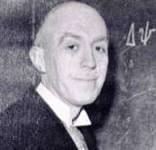Nationality France Role Physicist Fields Physics Children Laure de Broglie | Siblings Louis de Broglie Name Maurice Broglie | |
 | ||
Born 27 April 1875
Paris, France ( 1875-04-27 ) Known for X-ray diffraction
spectroscopy Died July 14, 1960, Neuilly-sur-Seine, France Spouse Camille Bernou de Rochetaillee (m. 1901–1960) Parents Pauline de La Forest d'Armaille, Victor de Broglie Grandparents Albert, 4th duc de Broglie, Pauline de Galard de Brassac de Bearn | ||
Notable awards Hughes Medal (1928) | ||
Louis-César-Victor-Maurice, 6th duc de Broglie (27 April 1875 – 14 July 1960) was a French physicist.
Contents

Early years
De Broglie was born in Paris, to Victor de Broglie. In 1901, he was married to Camille Bernou de Rochetaillée (1888–1966) in Paris. They had one daughter, Laure, born on 17 November 1904, who died, aged six, on 12 June 1911. He acceded to the title of duc de Broglie on his father's death in 1906. He died on 14 July 1960 in Neuilly-sur-Seine. His only child having died almost a half-century before, his brother Louis succeeded him as duke.
Having graduated from naval officer's school, Maurice de Broglie spent nine years in the French Navy, serving on a gunboat at Bizerte and in the Mediterranean Squadron. While serving, he became interested in physics, and began doing research on electromagnetism. De Broglie defied his family's wishes and left the navy in 1904 to pursue a scientific career. He studied under Paul Langevin at the Collège de France in Paris, receiving his doctorate in 1908.
Career
De Broglie made advances in the study of X-ray diffraction and spectroscopy. During the First World War, he worked on radio communications for the navy. After the war, he resumed his research at a large laboratory in his home. He occasionally collaborated with his younger brother Louis, who followed his professional lead and was training as a physicist, and they coauthored a paper in 1921. After Louis de Broglie's rise to prominence in the 1920s, building on some of their shared research, the elder de Broglie physicist continued his own research. While Louis was primarily a theoretician, Maurice himself was always the experimental physicist par excellence.
De Broglie became a member of the Académie des sciences in 1924, and in 1934 was elected to the Académie française, replacing the historian Pierre de La Gorce. He had the unique honor of welcoming his own brother into the Academy on the latter's induction. In 1942 he succeeded his mentor, assuming Langevin's chair in physics at the Collège de France. He was also elected to the Royal Society of London on 23 May 1940, having received the Royal Society's Hughes Medal in 1928.
